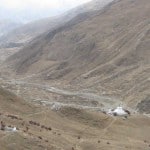2013 Katok monastery festival is confirmed to be on July 18th 2013;
Blog
2013 Saga Dawa Festival
2013 Saga dawa festival is on May 25
The trek for Kailash Cora shall begin to Drira Phuk monastery after this festival ceremony in Tarpoche
Tibet tour operator
Editor’s Note: The following contents was originally published on Ethics and Social Dimensions of Tourism, UNWTO. As a member of travel industry we follow this code, and share this with our partners, travellers and tourists;
Global Code of Ethics for Tourism (GCET) is a comprehensive set of principles designed to guide key-players in tourism development. Addressed to governments, the travel industry, communities and tourists alike, it aims to help maximise the sector’s benefits while minimising its potentially negative impact on the environment, cultural heritage and societies across the globe. click to download Tourism Ethics Global Code
For downloading GCET in other language, please visit to the page of Tourism Ethics Global Code
The most convenient city of going to Tibet across China is Chengdu. Previously for visiting Tibet, European visitors have to fly to Beijing or shanghai first, and then by china domestic flight to Chengdu and for the continuing flight to Tibet; this has made the travel costs much higher than other tours of china, and it also costs more hours in the air for getting into Tibet and leaving for return; after having the first direct Chengdu & Europe flight of Chengdu to Amsterdam; a new direct europe Chengdu flight will be open soon; On 2012, December 20th, British Airways announced that a direct flight between Chengdu and London will be opened since the next September; following that, Sichuan airline is planning to open a Chengdu to Paris direct flight in the next June; all those flights between Chengdu and Amsterdam, London, Paris takes about 10 -11 hours, it is at least 6 hours minimum shorter than the flight via Beijing or Shanghai; and it helps to make easy access to both Tibet and the other minority regions of southwest of China, such as Miao people in Guizhou, Bai people and Thai people in Yunnan province; and it is more easy to make a visit to Kham and Amdo
2013 Tibetan New Year festival is on 11th February 2013
2013 Bhutan Festivals have been updated with its dates, please downlaod at: Bhutan Festival Dates 2013, a fast an easy way to find the right Bhutan Festival for you.
Today, hermits are gradually returning to the caves of Drak Yerpa, and its shrines are being restored from the horrible damage of Cultural Revolution in 1960’s of 20thcentury.

Built on a hillside with more than 80 meditation caves, This site is about 25km east of Lhasa located on the mountain seated south bank of Lhasa River , and being described as the “life tree” or spiritual axis of Lhasa.

The road to Drak Yerpa has been rebuilt which are all well paved road from Lhasa to the parking lot

It was the home of several hundred hermits, monks, and nuns, and having been visited by Songsten Gampo, Yeshe Tsoygel, Padmasambhava and Asisha.

Mr. Tucci described this site: “Drak Yerpa appeared suddenly before my eyes as a bend of the road, a cascade of small white buildings along steep overgrown cliffs. One could have thought one was not in Tibet. Giant junipers and tufts of rhododendron topped a thick tangle of undergrowth, brushwood and grass victoriously fighting the hard barrenness of rocks.
The cliffs were riddled with burrows and caves, some of which were so high up on the fact of the abrupt hill that it would have been risky to climb them.”

Among the caves on the hillside is Chogyel Puk, where Songsten Gampo meditated.

Nearby is Lhakhang Puk, where the monk Lhalungpa Pelgi Dorje (now identified with Tulsi Rimpoche of Tupten Choling monastery in nepal) hid after assassinating the Bonpo king Langdama in 842.


Amdo, outside the TAR, extends a large areas of over Qinghai, parts of Gansu, and a small part of northern Sichuan of Kham. The trips to this enormous area can be vary, from Advernture to sightseeing; from tough trekking to leisure visit, you’re always able to find something to do;
Starting from Xining – the capital of Amdo approximately 20km west is the monastic townof Kumbum, another monastic town of Amdo is further south, called: Labrang; in between this two monastice towns is the cultural centre of Repkong, home to a distinctly vibrant tradition of Tibetan painting and sculpture. West from Repkong is the sacred Mt Amnye Machen, which is the highest spot in Amdo, and the focus that tibetan coming from all corners of Amdo as far as the west tibet for pilgrimage. continuing southwest to another culture site of Yushu. The 2nd large mountain of Amdo is called Mt. Nenpo Yutse located in the east corner of Amdo, next to Aba of Sichuan province;
Since Amdo is open to foreign visitor as Kham it is, there is NO Tibet travel permit required, therefore you are almost able to travel “freely”, although for those, whom would enjoy an easy and assisting tour, contacting one tour operator, of which you trust, would be a good idea to travel through this enormous area ensuring you travel safe, easy, fun…